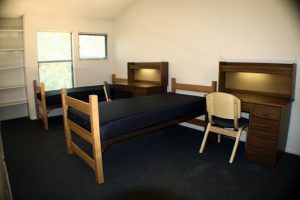Black Priority Housing: Safe Haven or Return to Separate but Equal?
With most Universities back in session, many college students are settling into their housing, but the months leading up to school may have been riddled with anxiety about student housing.
On-campus housing is offered at most four-year universities. Campus housing is student housing that is owned and controlled by the college campus. It offers several benefits, including an environment where students can meet and befriend one another, on-campus housing (often within walking distance to classes), and may be cheaper than living off-campus.
California State University, Los Angeles (“CSULA”) is the most recent university to offer priority on-campus housing to their African American students. The housing is in response to demands from the campus’ black students who say they experienced insensitive remarks and “macroaggressions” (daily verbal, behavioral, or environmental indignities such as racial slights or insults) from white classmates. University of Connecticut, UC Davis and UC Berkeley already offer similar housing to their black students. 
Proponents of the housing believe students can draw on their common experiences to support one another in black housing. Non-black students are not barred from applying for the housing.
While it is certainly admirable to enact housing regulations in an attempt to make black students feel comfortable on their own campus, the housing can be said to segregate black students. Are CSULA’s good intentions unintentionally contributing to the underlying problem of racism?
History of Segregation
Without going into the details of the horrific way our country treated blacks historically, African Americans have experienced extreme mistreatment, oppression, and inequality based entirely on their race.
In 1896, the pivotal constitutional law case of Plessy v. Ferguson upheld a legal doctrine that would be known as “separate but equal.” Under this doctrine, accommodations for blacks and whites could be separate but were for all intents and purposes supposed to be “equal.” They were not. Blacks had inferior everything – bathrooms, water fountains, schooling, modes of transportation, etc. Things were labeled “blacks” versus “whites” to designate who could use what. It was not a proud time in our history.
It wasn’t until 1954 that the “separate but equal” doctrine was overturned by the Supreme Court case of Brown v. Board of Education. The Court concluded that state laws establishing separate public schools for black and white students was unconstitutional, thereby overturning Plessy v. Ferguson. The case was one of the first acts of the Civil Rights Movement.
We have made great strides since the days of “separate but equal,” going so far as to elect our first African American president in 2008, but we still have a ways to go. Nothing exemplifies the disparity in treatment more than the recent “Black Lives Matter” movement. The movement was created in 2012 in response to Trayvon Martin’s murderer, George Zimmerman, being acquitted for his crime. Since then, numerous African Americans have been killed at the hands of citizen and police who have not been held accountable for their actions.
Will the Housing Stay?
Given the historical context and how many years it took to achieve desegregation, does the CSULA housing revert back to the days of segregation?
Probably not. Themed housing or student communities focusing on cultural identity is not new to college campuses. On-campus housing is offered to students based on their gender. Further, some colleges have “Common Interest Communities,” which provide students the opportunity to live in a space around a common interest, such as a social group, specific major or charity. None of these on-campus housing initiatives have been deemed inappropriate or criticized as a way to foster a culture of segregation within the school.
It is also important to note that CSULA is not the first campus to create black housing for its black students. The housing does not discriminate against peers who are not black, but wish to live in the designated housing. Finally, the housing was a direct result of requests from CSULA’s black students, who felt that some of their white counterparts were acting aggressively toward them.
And we mustn’t forget the case of the freshman African American student, Donald Williams Jr., who was assigned a dormitory suite with seven other suitemates at San Jose State in California. Williams was targeted in a number of hijinks as the only black student in the suite, including his roommates sneaking up behind him to place a U-shaped bike lock around his neck, hanging a Confederate flag in the common room, writing racial slurs on the dry-erase board in the common room, and calling him names such as “three-fifths” and “fraction.” Three of the white roommates were found guilty of a misdemeanor against Williams for bullying, but not for a hate crime.
If CSULA’s housing can prevent bullying or the commission of a hate crime, then they should be welcome at all college campuses.


Comments